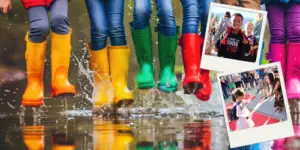The rotunda of the Utah Capitol came alive on Tuesday with song, dance and colorful art demonstrations. The daylong showcase, which featured a performance by Ridgecrest Elementary’s choir, was organized to underscore the importance of arts education.
For poignant proof of the value of the arts, though, one need only have accompanied the student choir on its informational tour of the Capitol building. The fourth- and fifth-grade students learned about the “base isolation system” installed by engineers to make the building earthquake-safe. They took a stroll down the “Hall of Governors,” were treated to a peek inside the House Chambers, and got to run their hands along a cracked replica of the Liberty Bell.
For the kids, all this paled in comparison, however, to proud, Italian marble lions standing guard at the building’s entrances, the “heroic” bronze sculptures in the rotunda, and the California gulls painted on the ceiling inside the Capital Dome. “How big are those?” asked one of the students in awe. The answer: They may look tiny from here, but in truth, their wings span as wide as six-feet.
Art is a form of expression that moves people emotionally. It’s the act of making something visually interesting and entertaining. It’s a form of discovery that helps us understand new and complex information and for members of Ridgecrest’s choir, it was the ticket to a fun introduction to history and politics.
Fun Utah Capitol Facts
- The chandelier hanging in the rotunda weighs 1,000 pounds, but the chain that supports it weighs a whopping 5,000 pounds.
- The original lions safeguarding the building’s entrances were made from cement, and were retired and replaced with marble replicas when the Capitol was refurbished. They now reside outside the Cannibal roller coaster at Utah’s Lagoon theme park.
- Construction of the Capitol began in December 1912 and was completed in 1916. The building underwent a massive restoration from 2004-2008, which cost about $227 million.
- Recurrent symbolic architectural embellishes can be found throughout the Capitol, including: beehives, the Utah state emblem; rosettes reminiscent of the lotus flower, which symbolizes eternal life and wisdom; and wreaths of acanthus leaves suggestive of vitality and victory.
Source: Canyons School District Utah State Capitol Tour Guidebook
[flickrset=72157680377946485″ >Click here to view photos





